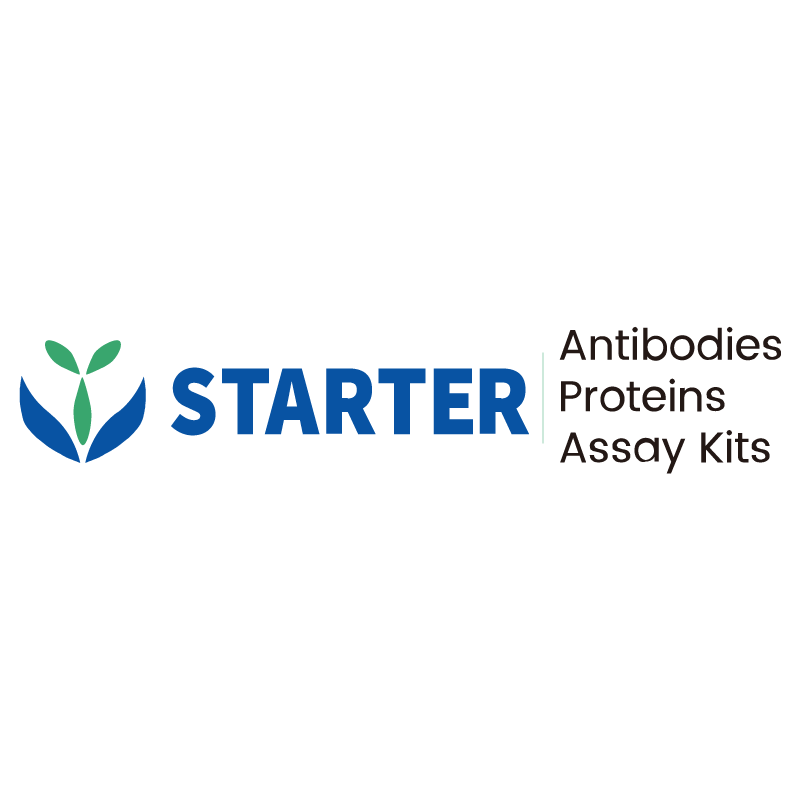WB result of IGF1 Receptor Recombinant Rabbit mAb
Primary antibody: IGF1 Receptor Recombinant Rabbit mAb at 1/1000 dilution
Lane 1: MCF7 whole cell lysate 20 µg
Lane 2: A431 whole cell lysate 20 µg
Lane 3: HepG2 whole cell lysate 20 µg
Lane 4: HeLa whole cell lysate 20 µg
Lane 5: HCT 116 whole cell lysate 20 µg
Lane 6: MDA-MB-231 whole cell lysate 20 µg
Lane 7: HEK-293 whole cell lysate 20 µg
Secondary antibody: Goat Anti-rabbit IgG, (H+L), HRP conjugated at 1/10000 dilution
Predicted MW: 155 kDa
Observed MW: 100, 200 kDa
Product Details
Product Details
Product Specification
| Host | Rabbit |
| Antigen | IGF1 Receptor |
| Synonyms | Insulin-like growth factor 1 receptor; Insulin-like growth factor I receptor (IGF-I receptor); CD221; IGF1R |
| Immunogen | Recombinant Protein |
| Location | Cell membrane |
| Accession | P08069 |
| Clone Number | S-1617-146 |
| Antibody Type | Recombinant mAb |
| Isotype | IgG |
| Application | WB |
| Reactivity | Hu, Ms, Rt |
| Positive Sample | MCF7, A431, HepG2, HeLa, HCT 116, MDA-MB-231, HEK-293, C2C12, NIH/3T3, mouse brain, mouse spleen, C6, rat brain |
| Predicted Reactivity | Bv |
| Purification | Protein A |
| Concentration | 0.5 mg/ml |
| Conjugation | Unconjugated |
| Physical Appearance | Liquid |
| Storage Buffer | PBS, 40% Glycerol, 0.05% BSA, 0.03% Proclin 300 |
| Stability & Storage | 12 months from date of receipt / reconstitution, -20 °C as supplied |
Dilution
| application | dilution | species |
| WB | 1:1000 | Hu, Ms, Rt |
Background
The insulin-like growth factor 1 receptor (IGF-1R) is a transmembrane receptor tyrosine kinase that is widely expressed on the surface of human cells and plays a crucial role in cell growth, proliferation, and differentiation. It is activated by insulin-like growth factor 1 (IGF-1) and IGF-2, and to a lesser extent by insulin. The IGF-1R is structurally similar to the insulin receptor and consists of two extracellular α-subunits involved in ligand binding and two transmembrane β-subunits containing a tyrosine kinase domain. Upon activation, IGF-1R triggers several intracellular signaling pathways, including the PI3K/Akt/mTOR and RAS/RAF/MAPK pathways, which promote cell survival, inhibit apoptosis, and regulate metabolism. Additionally, IGF-1R has been found to migrate to the cell nucleus, where it can act as a transcriptional activator. Given its significant anti-apoptotic and pro-survival functions, IGF-1R is highly expressed in many types of cancer and is considered a promising target for cancer therapy.
Picture
Picture
Western Blot
WB result of IGF1 Receptor Recombinant Rabbit mAb
Primary antibody: IGF1 Receptor Recombinant Rabbit mAb at 1/1000 dilution
Lane 1: C2C12 whole cell lysate 20 µg
Lane 2: NIH/3T3 whole cell lysate 20 µg
Lane 3: mouse brain lysate 20 µg
Lane 4: mouse spleen lysate 20 µg
Secondary antibody: Goat Anti-rabbit IgG, (H+L), HRP conjugated at 1/10000 dilution
Predicted MW: 155 kDa
Observed MW: 105, 200 kDa
WB result of IGF1 Receptor Recombinant Rabbit mAb
Primary antibody: IGF1 Receptor Recombinant Rabbit mAb at 1/1000 dilution
Lane 1: C6 whole cell lysate 20 µg
Lane 2: rat brain lysate 20 µg
Secondary antibody: Goat Anti-rabbit IgG, (H+L), HRP conjugated at 1/10000 dilution
Predicted MW: 155 kDa
Observed MW: 110, 200 kDa


